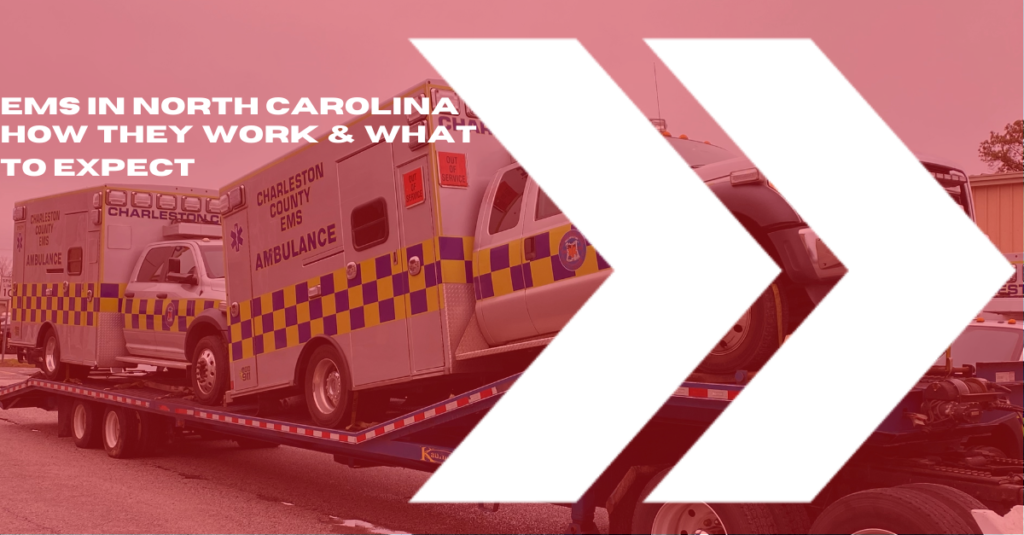When a medical emergency strikes, every second counts. That’s why it’s important to understand how emergency medical services (EMS) work in North Carolina, so you can feel prepared and confident in the event of an emergency. In this blog post, we’ll take a closer look at how EMS in North Carolina operates, including what to expect when you call 911 and the different types of ambulances and medical personnel that may be dispatched to your location.
Activating the Emergency Response System
The first step in getting emergency medical help in North Carolina is to call 911. When you call 911, your call will be routed to the appropriate emergency dispatch center, depending on your location. The 911 dispatcher will ask you a series of questions to determine the nature of the emergency and the appropriate level of response.
Once the dispatcher has all the necessary information, they will dispatch the appropriate resources to your location. This may include an ambulance and paramedics, or a fire truck and EMTs, depending on the nature of the emergency and the resources available in your area.
Types of Ambulances and Medical Personnel
North Carolina has a variety of ambulances and medical personnel that can respond to emergencies, each with its own level of training and expertise. Here are a few examples:
- Basic Life Support (BLS) Ambulance: These ambulances are staffed by basic emergency medical technicians (EMTs) who are trained to provide basic life support, such as first aid and CPR. BLS ambulances are typically used for non-life-threatening emergencies, such as broken bones or minor cuts.
- Advanced Life Support (ALS) Ambulance: These ambulances are staffed by paramedics, who are trained to provide advanced life support, such as administering medication and intubation. ALS ambulances are typically used for more serious emergencies, such as heart attacks or strokes.
- Critical Care Transport (CCT) Ambulance: These ambulances are equipped with advanced medical equipment and staffed by specially trained paramedics who are able to provide critical care during transport. CCT ambulances are typically used to transport critically ill patients to specialized medical facilities.
In addition to traditional ambulance services, North Carolina also has a number of specialized EMS units, such as HazMat teams, that are specially trained to handle hazardous materials incidents and natural disasters.
What to Expect When an Ambulance Arrives
When an ambulance arrives at your location, the paramedics will assess the patient’s condition and provide appropriate medical care. Depending on the nature of the emergency, they may administer medication, provide oxygen, or perform other life-saving procedures. Once the patient is stabilized, they will be transported to the appropriate medical facility.
It’s important to note that North Carolina has a tiered response system, which means that the nearest available ambulance is sent to the scene regardless of the level of care they are able to provide. This means that if an ALS ambulance is closer, it will be sent to your location, but if the closest ambulance is a BLS, that is the one that will respond.
Preparing for an Emergency
While it’s impossible to predict when an emergency will occur, there are steps you can take to prepare yourself and your loved ones. One of the best things you can do is to learn CPR and first aid, which can help you provide life-saving care until the paramedics arrive.
Another important step is to make sure you have emergency contact information readily available, so you can provide it to the 911 dispatcher when you call.

